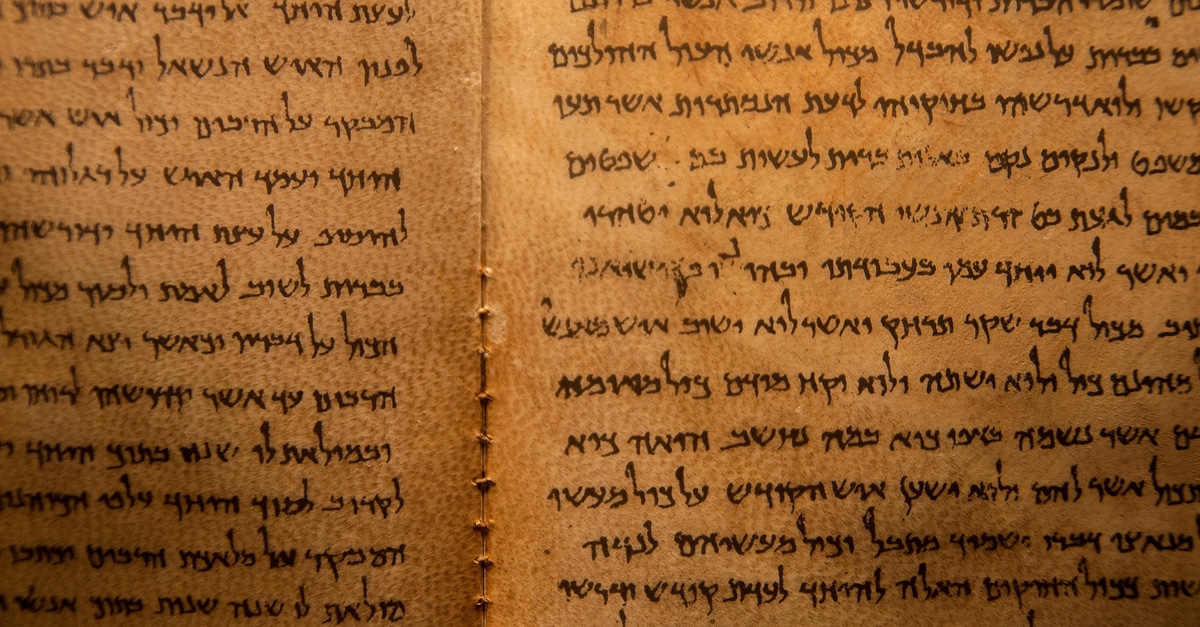Are the Gnostic Gospels Reliable Documents?

New Agers have long claimed the Gnostic gospels are the true Scriptures. Pop-fiction writers such as Dan Brown claim the same. Some liberal Christian scholars give high credence to these so-called “gospels.” In what follows, I will demonstrate why they are false gospels.
Christians have been concerned about false gospels since the early years of Christianity. In his classic Adversus Haereses (Against Heresies), Irenaeus (AD 130-200) refers to “an unspeakable number of apocryphal and spurious writings, which they themselves [heretics] had forged, to bewilder the minds of the foolish.”[1] One of the Gnostic gospels discovered at Nag Hammadi in 1945 is The Gospel of Truth, about which Irenaeus says: “It agrees in nothing with the Gospels of the Apostles, so that they have really no Gospel which is not full of blasphemy. For if what they have published is the Gospel of Truth, and yet is totally unlike those which have been handed down to us by the Apostles… [then] that which has been handed down from the Apostles can no longer be reckoned the Gospel of Truth.”[2] Origen (AD 185-253) noted that “the Church possesses four Gospels, heresy a great many.”[3]
Presently there are three theories about the formation of the Nag Hammadi collection. One theory is that the library belonged to a Sethian Gnostic sect that lived in the Nag Hammadi area. Seth, a son of Adam, was highly regarded as the ancestor of the race of enlightened Gnostics and is mentioned prominently in some Nag Hammadi texts. A second theory is that Christian Gnostic monks collected the library before the time when such monks were considered heretics and consequently expelled. Such monks may have hidden their gospels for safekeeping. A third theory is that orthodox monks collected the library for use in refuting Gnostic heretics.
In any event, most scholars agree that the Gnostic gospels date far too late to be reliable. The earliest Gnostic gospels may date as early as AD 150, but most date from the third and fourth centuries. Further, there are no historical or geographical elements in these “gospels” that can be objectively verified, as is true in the canonical gospels. There are certainly no genuine eyewitness accounts in these late gospels. Moreover, no one—not even liberal theologians—believes the biblical Thomas wrote the Gospel of Thomas or that the biblical Philip wrote The Gospel of Philip.
The canonical gospels have been thoroughly tested in regard to history and have been found to be exceedingly accurate. Through many years of research, Scholar William Ramsey set out to disprove that Luke was a reliable historian, either in his gospel or in the book of Acts (which he also authored). Following his exhaustive study, Ramsey concluded that Luke was a first-rate historian in terms of geography, people, place names, and the like.
Luke’s gospel is dated at AD 60. Luke’s gospel is mentioned as “Scripture” in 1 Timothy 5:18, and 1 Timothy is dated at AD 63. This means Luke’s gospel was recognized as “Scripture” within three years of its writing—hundreds of years before most of the Gnostic gospels.
Related to this, I need to point out that the apostle Paul died during the Neronian persecution, which took place in AD 64. Paul was undoubtedly still alive as of the end of the book of Acts. This means Acts was written prior to AD 64. We further know that Luke wrote his Gospel (“Luke”) before he wrote the book of Acts, which means that Luke was written around AD 60, which places him far earlier than the Gnostic gospels.
Scholars have often pointed out that all four canonical gospels must date prior to AD 70 for one simple fact: All four of them fail to mention anything at all about the destruction of Jerusalem and its temple in AD 70 at the hands of Titus and his Roman warriors. The destruction of Jerusalem and the temple would be on a par with the Holocaust in modern times. For this horrific event not to be mentioned can mean only one thing: the four canonical gospels must have been written before this time.
As far as the Gnostic gospels go, one does not have to read them for long to discover that they are irreconcilable with the New Testament gospels. This is an important point because if the historical evidence supports the New Testament gospels, the Gnostic gospels are proven false and doctrinally unreliable. Consider the following:
1. The Gnostic gospels portray Jesus as commanding the disciples to keep His teaching secret, but in the New Testament, Jesus commissioned the disciples to share the good news with the whole world. The Gospel of Thomas begins with these words: “These are the secret sayings which the living Jesus spoke….”[4] The Apocryphon of John, another Gnostic document, contains a sober warning by Jesus of a curse that would fall on any who share His secret teaching with outsiders: “Cursed be everyone who will exchange these things for a gift, or for food, or for drink, or for clothing, or for any other such things.”[5] Jesus also allegedly commanded John to put written records of His secret teachings in “a safe place.” Does this sound like the Jesus of the Sermon on the Mount?
It was quite common among Gnostics to be protective of the gnosis, or secret teaching. Nag Hammadi analyst John Dart comments: “The ‘curse’ of Jesus in The Apocryphon of John, put into Jesus’ mouth by Gnostic authors, followed a time-honored practice of mystic groups warning their members that such sacred scriptures should not fall into the wrong hands. For historians, much more interesting was the advice to put the writings in a safe place. In the case of the Gnostic papyri, the place, wherever it was, had been ‘safe’ for centuries [until 1945 when they were discovered at Nag Hammadi].”[6]
Such a secretive attitude, however, is entirely unlike the Jesus of the New Testament Gospels. In what is traditionally called “The Great Commission,” Jesus commanded the disciples: “Therefore go and make disciples of all nations…” (Matthew 28:19). Before He ascended into heaven following His resurrection, Jesus said to the disciples: “You will receive power when the Holy Spirit comes on you, and you will be my witnesses in Jerusalem, and in all Judea and Samaria, and to the ends of the earth” (Acts 1:8). Clearly, the New Testament Jesus wanted people everywhere to hear the good news of salvation.
2. The teachings of Jesus in the New Testament gospels are utterly incompatible with Gnosticism. Some of Jesus’ teachings in the gospels may be open to various interpretations, but this is a far cry from saying that they can be construed to teach any form of Gnosticism. Among other things, the Gnostics taught (1) the existence of both a transcendent God and a lower God (the Creator-Demiurge), whom Gnostics equated with Yahweh of the Old Testament; (2) spirit is good, but matter is evil; (3) man’s spirit is imprisoned in the material body but will escape this imprisonment at death; and (4) there is no physical resurrection of the body.
The New Testament Jesus taught none of these ideas. Contrary to Gnostic teachings, scholar Gary Habermas tells us that “Jesus does not refer to Yahweh as less than the supreme Creator and God of the universe. Neither does he speak of the physical body as a necessary evil that imprisons the soul. Concerning eternal life, Jesus taught the [physical] resurrection of the body, not the [mere] immortality of the soul.”[7]
3. The Gnostic gospels offer us a redemption through gnosis, whereas New Testament redemption is based wholly on faith in Christ. The “truth” of The Gospel of Truth (for the Gnostic) is the knowledge that he is “a being from above.”[8] This “gospel” assures us that “whosoever has knowledge understands from whence he has come and whither he goes.”[9] The Teachings of Silvanus, another Gnostic document, portrays Jesus as teaching salvation by enlightenment: “Bring in your guide and your teacher. The mind is the guide, but reason is the teacher. They will bring you out of destruction and dangers… Enlighten your mind… Light the lamp within you.”[10]
Contrary to this, redemption in the New Testament is a free gift for those who believe in Jesus: “For God so loved the world that he gave his one and only Son, that whoever believes in him shall not perish but have eternal life” (John 3:16); “Whoever believes in him [God’s Son] is not condemned, but whoever does not believe stands condemned already because he has not believed in the name of God’s one and only Son” (John 3:18); “Everyone who looks to the Son and believes in him shall have eternal life, and I will raise him up at the last day” (John 6:40b); “I tell you the truth, he who believes has everlasting life” (John 6:47); “I am the resurrection and the life. He who believes in me will live, even though he dies” (John 11:25).
4. The Gnostic gospels portray Jesus as a “Gnostic Revealer” and not as Christ the Savior and Redeemer. In the New Testament, when Jesus asked Peter, “Who do you say I am?” (Matthew 16:15), Peter rightly responded, “You are the Christ, the Son of the living God” (v. 16). In The Gospel of Thomas, however, Jesus and the disciples are portrayed in a much different light:
Jesus said to his disciples, “Compare me to someone and tell Me whom I am like.” Simon Peter said to Him, “You are like a righteous angel.” Matthew said to Him, “You are like a wise philosopher.” Thomas said to Him, “Master, my mouth is wholly incapable of saying whom You are like.” Jesus said, “I am not your master. Because you have drunk, you have become intoxicated from the bubbling spring which I have measured out.” And He took him and withdrew and told him three things. When Thomas returned to his companions, they asked him, “What did Jesus say to you?” Thomas said to them, “If I tell you one of the things which he told me, you will pick up stones and throw them at me; a fire will come out of the stones and burn you up.”[11]
F.F. Bruce, a noted Bible scholar who has done significant research on the Nag Hammadi documents, detects Gnostic elements in this encounter: “Here the answers [to Jesus’ question] are attempts to depict Jesus as the Gnostic Revealer. Those who have imbibed the gnosis which he imparts (the ‘bubbling spring’ which he has spread abroad) are not his servants but his friends, and therefore ‘Master’ is an unsuitable title for them to give him.”[12]
As for the three words Jesus secretly uttered to Thomas, Bruce says these words conveyed to Thomas Jesus’ hidden identity and “are probably the three secret words on which, according to the Naassenes, the existence of the world depended: Kaulakau, Saulasau, Zeesar.”[13] Jesus as a Gnostic Revealer is often portrayed as communicating secret things to one or more disciples in the Gnostic gospels. How unlike this is to the New Testament Jesus, who openly communicated His teachings to all who would listen.
5. The Gnostic gospels cannot properly be called gospels. Neither The Gospel of Truth nor The Gospel of Philip, as case examples, contain an orderly account of the birth, life, deeds, death, and resurrection of Christ. Both lack Old Testament background, ethical exhortations, and end-time eschatology. Ignorance is said to be the primary culprit of humanity’s condition, not sin.[14] Therefore, in no sense of the word can these documents be appropriately referred to as gospels.
The Gospel of Thomas is another case example. F.F Bruce notes: “No collection of sayings of Jesus can properly be called a gospel because by its nature it has no passion narrative, and the passion narrative is the core of the essential gospel. But least of all can this collection be called a gospel because not only does it lack a passion narrative, but it includes only one saying (55) remotely hinting at the passion.”[15] Moreover, unlike the New Testament gospels, the content of The Gospel of Thomas is “anti-Judaistic, anti-Old Testament, anti-ritualistic and almost anti-moralistic.”[16]
By contrast, the four New Testament gospels all contain orderly accounts of the birth, life, deeds, death, and resurrection of Jesus Christ. They also point to the glorious “good news” of redemption in Jesus Christ and are therefore “gospels” in the truest sense of the word.
Since God the Holy Spirit inspired the gospels of Matthew, Mark, Luke, and John (2 Timothy 3:16; 2 Peter 1:21), we can assume these four gospels contain everything God wanted us to know about the words and works of Jesus. The Gnostic gospels have an uphill battle with the incumbent!
Go Deeper
- Habermas Resurrection Package Offer
- The Ultimate Science Package
- The Most Asked Prophecy Questions – Updated 2021 – Book
- Irenaeus, Adversus Haereses, i.20.1.↑
- The Biblical World, ed. Charles F. Pfeiffer (Grand Rapids: Baker Book House, 1976), pp. 404-405.↑
- First Homily on Luke; cited by Yamauchi, International Standard Bible Encyclopedia (Grand Rapids: Eerdmans,1980), s.v. “Nag Hammadi,” Vol. 3, p. 182.↑
- The Nag Hammadi Library, ed. James M. Robinson (San Francisco: Harper & Row Publishers, 1978), p. 118.↑
- John Dart, Jesus of Heresy and History: The Discovery and Meaning of the Nag Hammadi Gnostic Library (San Francisco: Harper & Row, 1988), p. 15.↑
- Dart, p. 16.↑
- Gary R. Habermas, Ancient Evidence for the Life of Jesus (Nashville: Thomas Nelson Publishers, 1984), p. 64.↑
- Cited in The Biblical World, p. 405.↑
- Ibid.↑
- Teachings of Silvanus, 85.24-106.14, in Nag Hammadi Library, pp. 347-56; cited by Pagels, Gnostic Gospels (New York: Random House, 1979), p. 127.↑
- The Gospel of Thomas, Saying 13, Cited in The Nag Hammadi Library, p. 119.↑
- F. F. Bruce, Jesus & Christian Origins Outside the New Testament (Grand Rapids: World missions. B. Eerdmans Publishing Co., 1974), p. 118.↑
- Bruce, p. 118.↑
- The Biblical World, p. 405.↑
- Bruce, p. 155.↑
- The Biblical World, p. 407.↑








